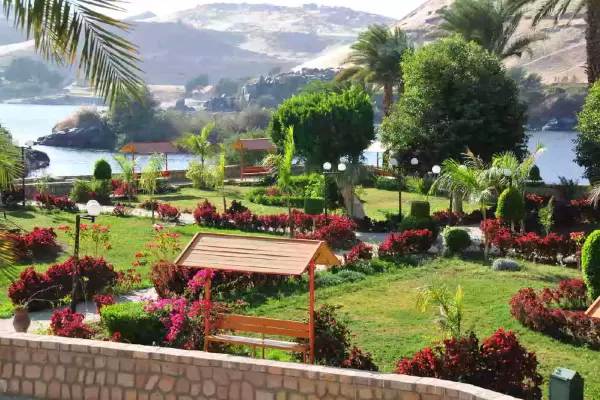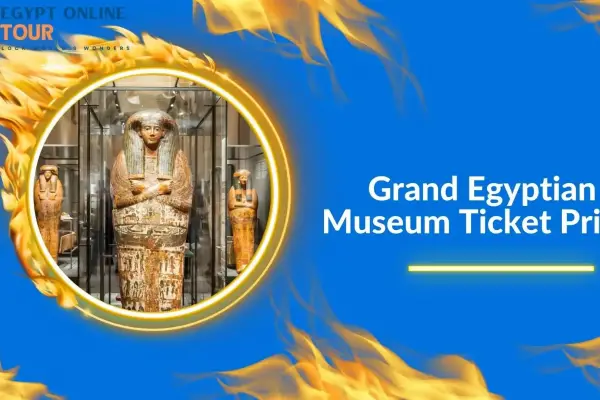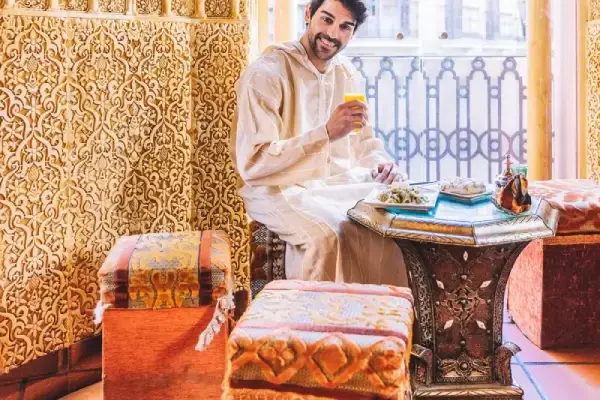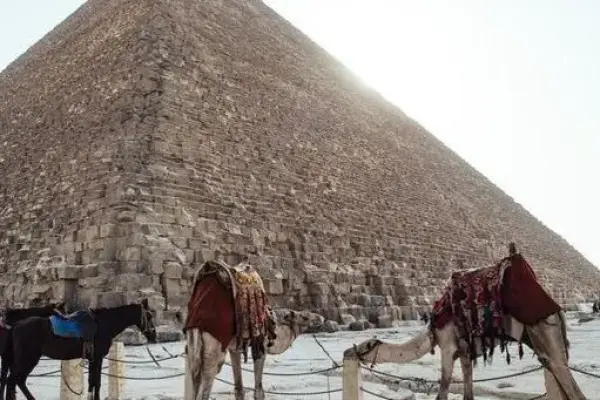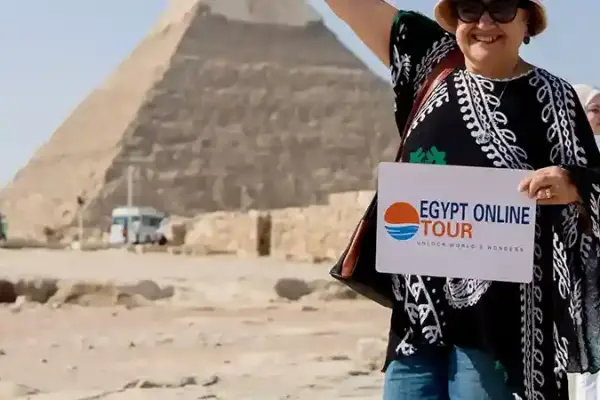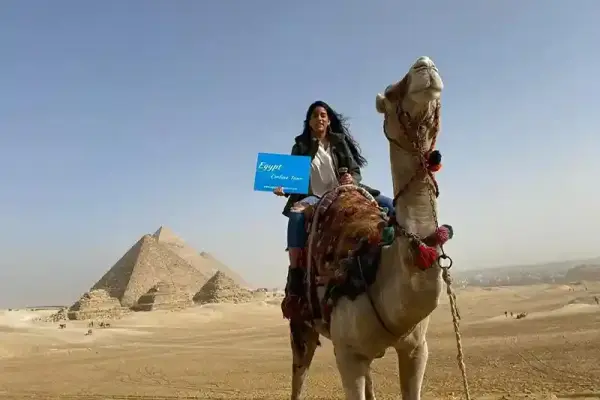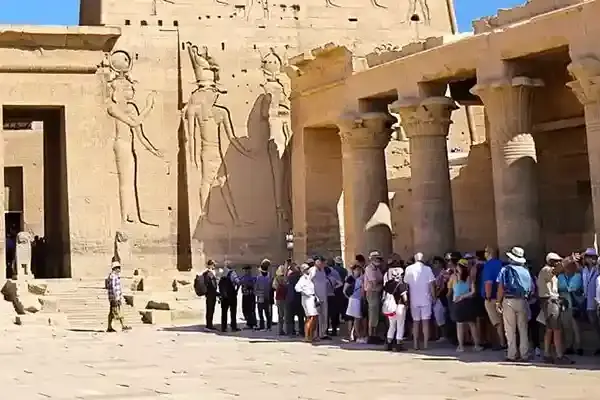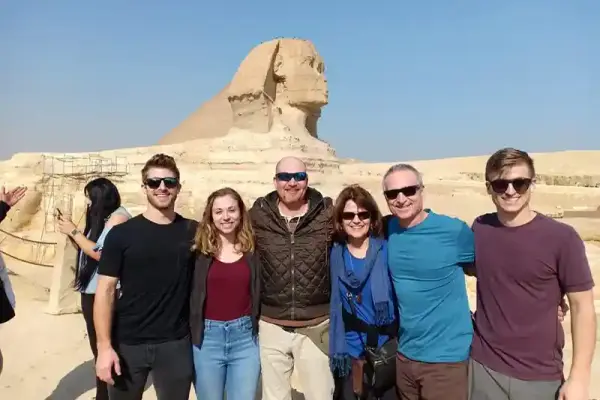The choice of the location for building the pyramids was not random. To place the pyramids' peaks beneath the three stars that the ancient Egyptians revered, the pharaohs employed a great deal of mathematics. These stars, known as Orion's Belt, are visible twice annually. As a result, the ancient pharaohs were meticulous in all they did, including organizing their social structure in old kingdom Egypt. They were organized in a specific way, with each class having its own characteristics. Read on in this article to learn more about the details.
Table of contents [Show]
- Key Features of Ancient Egyptian Society
- Overview of Social Structure in Old Kingdom Egypt
- What Was the Old Kingdom Known For
- Building the Pyramids:
- The Pharaoh’s Role in Old Kingdom Society
- Pharaoh’s Political Control Over Society
- The Role of Priests and Scribes
- Social structure in Old Kingdom Egypt
- How Art and Tombs Show Social Hierarchy
- Conclusion
Key Features of Ancient Egyptian Society

Ancient Egyptian society was highly organized in the form of a social pyramid:
- At the top was the pharaoh, who was considered a living god.
- After him came the priests, high officials, and rulers.
- Then came the scribes, craftsmen, and merchants.
- At the bottom were the peasants and workers who carried this civilization on their shoulders.
Despite class differences, everyone played an important role in the continuity of the state.
Religion and Its Role in Daily Life
Religion was the primary driving force behind everything. Because the ancient Egyptians believed in the afterlife and were preparing themselves for life after death, we saw decorated tombs, mummification, and papyri that recounted the mysteries of the faith.
Even daily jobs were linked to pleasing the gods and maintaining "ma'at"—a symbol of order and justice.
Family, Women, and Education
- The family was the cornerstone of society.
- The father was responsible for the home.
- The mother was highly respected, and sometimes owned land or even worked as a priestess or merchant.
- Education was reserved for the scribal class, who learned hieroglyphic writing and arithmetic, preparing them for work in the service of the state.
- As for art, the murals, statues, and decorations were all meticulously crafted, illustrating strength, faith, and daily life.
- As for work, the ancient Egyptians worked in agriculture, construction, trade, and sculpture.
- There was a strict system, but it relied on skill and hard work.
This is a civilization that still lives among us, with every temple, every statue, and every stone engraved with hieroglyphs!
Best Egypt Vacation Packages
If you want to see this for yourself, book the best Egypt Vacation Packages "In the Heart of Civilization" with Egypt Online Tour!
You'll see the Pyramids, the Museum of Egyptian Civilization, Saqqara, and walk through places that once housed scribes and priests.
Tour Luxury, professional guides, VIP service, and memories to last a lifetime.
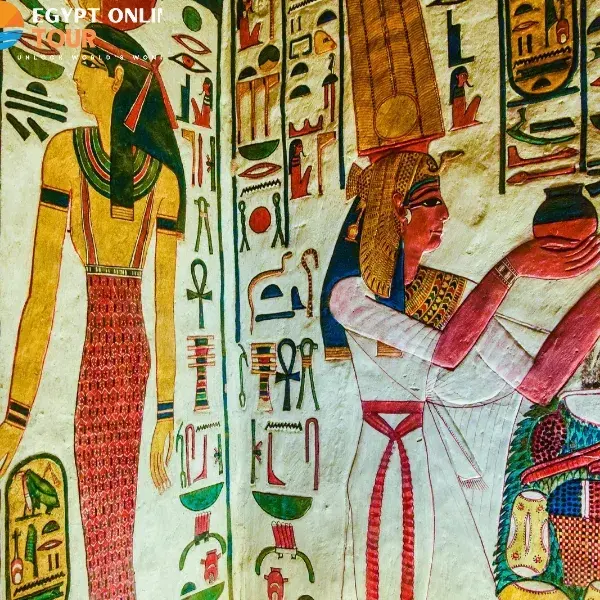
Social life in ancient Egypt was rich, complex, and multifaceted, with intertwined aspects that profoundly shaped the identity of Pharaonic society. From customs and traditions to family life, to entertainment and music... every aspect bore the imprint of a civilization thousands of years ahead of its time.
Today, in Overview of Social Structure in Old Kingdom Egypt, through the Egypt Online Tour, you can experience this for yourself and discover how the ancient Egyptian was not just a peasant or a worker, but part of building an eternal civilization.
Egyptian society during the Old Kingdom was organized in a strict hierarchical fashion, reflecting the religious and political principles governed by "Maat" (justice and cosmic balance). This pyramid consisted of:
The Pharaoh:
At the apex, he was considered a living god and a mediator between humans and the gods. He was responsible for preserving "Maat" by administering justice, securing the country's borders, and ensuring the Nile's flooding. He enjoyed absolute power over lands and resources.
2-Nobles and Priests:
Directly below the pharaoh, nobles held administrative positions as provincial governors (nomarchs), while priests administered religious rituals in the temples, which were economic and religious centers.
3-Scribes and Soldiers:
Scribes, an educated elite, recorded events and managed tax accounts. Soldiers protected borders and managed massive construction projects such as the pyramids.
4-Craftsmen and Merchants:
Craftsmen produced luxury goods such as jewelry and pottery, while merchants facilitated the exchange of goods with neighboring regions.
5-Farmers and Laborers:
They constituted the vast majority of the population and worked in agriculture or construction. They were paid in kind (grain or beer) for their labor.
6-Slaves:
At the bottom, they were often prisoners of war, working in homes or mines, but their use in the construction of the pyramids is not recorded.
Social order was closely linked to religious beliefs:
- Maat: The central principle that ensured balance between classes. Any disruption to this balance (such as drought or unrest) was attributed to the pharaoh or the elite's neglect of their duties.
- Religious rituals, such as offerings at temples, administered by priests on behalf of the pharaoh, ensured the gods' satisfaction with the entire society.
Administration and Decentralization in the Late Period
During the Sixth Dynasty (c. 2323–2150 BC), the pharaoh's authority began to weaken due to:
- The increasing influence of provincial governors (nomarchs): who began to govern their regions independently, leading to the fragmentation of central authority.
- Political marriage: Pharaohs such as Pepi I and II married women from regional families to strengthen alliances, giving those families greater influence.
- Climate change: Drought led to resource shortages, exacerbating internal conflicts.
Education
- Scribes: These were the only class with the opportunity for social advancement, having learned to read and write in temple schools, which qualified them for administrative positions.
- Heredity: In most cases, social status was inherited, especially among the nobility and priests.
The Old Kingdom period represented a model of social stability based on religion and a strict hierarchy, but it also revealed the system's vulnerability to environmental and political change. This era is fundamental for understanding the development of later Egyptian civilization, leaving a legacy of administrative and artistic innovations that continue to amaze the world.
Egypt Adventure Tours
Imagine visiting a real Pharaonic village and seeing how the family lived.
Book your Egypt Adventure Tours now with Egypt Online Tour and experience it for yourself with our tours. You'll see murals that accurately depict the role of Egyptian women and enjoy visiting real sites where these tools and murals appeared from the heart of history. We'll let you see the interiors of Pharaonic houses, furniture, and lifestyles, all with Egypt Online Tour and the best packages.
Let our local travel experts help you design the perfect itinerary. Whether you're seeking adventure, culture, or relaxation, we've got you covered!
What Was the Old Kingdom Known For
Have you ever wondered: What was the golden age in which Egypt began laying the first foundations of its ancient civilization? Let's go back thousands of years, specifically to the Old Kingdom, which historians call the "Age of the Pyramid Builders."
The Old Kingdom encompasses the Third to Sixth Dynasties and began around 2686 BC.
During this period, the first strong central government was established, and the king or pharaoh was the center of the universe, holding absolute and sacred authority. see What Was the Old Kingdom Known For and Most notable landmarks of the Old Kingdom
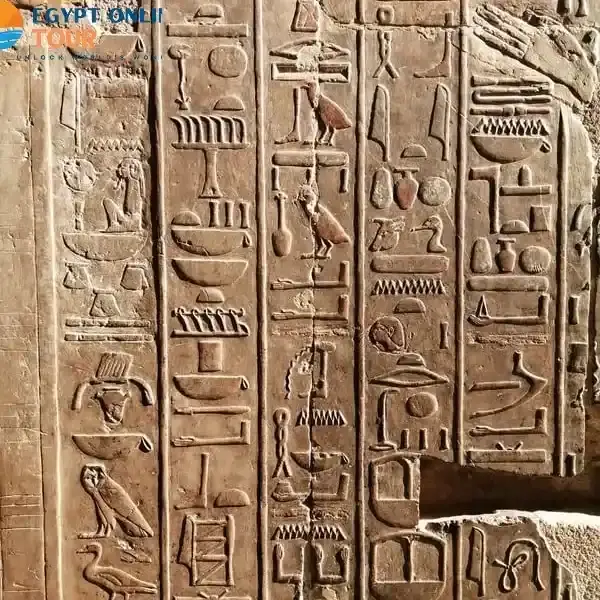
Building the Pyramids:
The Old Kingdom was famous for building the giant pyramids, considered the greatest architectural achievement in human history. This development began with the Step Pyramid of Djoser at Saqqara (Third Dynasty), designed by the architect Imhotep as the world's first massive stone building, transforming the traditional mastaba into a six-tiered pyramid.
The Pyramids of Giza (Fourth Dynasty):
- The Pyramid of Khufu: The largest of these (original height 146 meters), built from 2.3 million stone blocks, with a complex system of internal passages such as the "Grand Gallery" and the granite burial chamber.
- The Pyramid of Khafre: It includes a valley temple and a smaller pyramid, with a lion-like sphinx carved from limestone and measuring 73 meters tall.
- Construction Precision: The pyramids were precisely oriented to the cardinal directions (north-south, east-west) with an offset of no more than 0.05 degrees, reflecting advanced astronomical knowledge.
Administration and Organization System:
During this period, a class of scribes emerged, forming a professional administrative apparatus that oversaw agriculture, taxes, and grain distribution.
The administrative system became highly centralized under the authority of the pharaoh, who was considered the earthly embodiment of the god Horus. The pharaoh's sons were appointed as governors of provinces (nomarchs) to ensure loyalty. This was also evident in the elite tombs surrounding the Giza Pyramids, such as the tomb of Mereruka (Vizier Teti), which contained 32 chambers engraved with scenes of daily life.
The Pyramid Texts: Inscribed on the walls of the Pyramid of Unas (Fifth Dynasty), they are the oldest known funerary texts. They include spells to ensure the pharaoh's resurrection in the afterlife, such as:
Osiris, grant the king life and power, so that he may ascend to heaven like an invincible star.
Advances in Art and Architecture:
Statues were very precise, depicting the pharaoh with power and majesty, and the concept of life after death began to emerge.
Funeral Art and Sculpture
The art of the Old Kingdom was characterized by idealized realism, as in the seated statue of Khafre (Egyptian Museum), which depicts the king with an athletic body and serene features, a symbol of immortality. Other evidence includes:
- Ka statues: such as the statue of Rahotep and his wife, Neferet (Egyptian Museum), made of colored limestone, which was believed to be inhabited by the spirit of the deceased (the Ka).
- Wall reliefs: in pyramid temples, such as fishing scenes at the Temple of Sahure (Abu Sir), which document daily life and religious rituals.
Society and Religion
Religion was at the heart of daily life, and the belief in resurrection and immortality led to the practice of mummification and the construction of monumental tombs with inscriptions detailing every detail of their lives.
The Old Kingdom was associated with the strengthening of Ra's worship, especially during the Fifth Dynasty, when solar temples were built at Abu Sir, such as the Temple of Nyuserre, featuring massive obelisks and altars. In contrast, the cult of Osiris emerged at the end of the period, as evidenced by the Unas Pyramid Texts, which combine solar and Osirian mythology.
Society was organized, comprising the king, priests, soldiers, and later peasants and workers who helped build these stone wonders.
Economy and Foreign Trade
The economy was based on tax agriculture, with grain stored in state warehouses for redistribution. Trade with neighboring regions also flourished:
- Expeditions to Punt: Later inscriptions at Hatshepsut's temple record details of these expeditions, but archaeological evidence from the Old Kingdom indicates the importation of incense and ebony from Africa.
- Sinai Mines: Wadi el-Maghara inscriptions show the extraction of copper and turquoise during the reign of Sneferu (Fourth Dynasty).
The Old Kingdom was not just the age of pyramids; it was an integrated system of architectural innovation, strict social organization, and religious development that laid the foundation for later Egyptian civilization. Evidence such as the Pyramid Texts, intricate sculptures, and the astronomical design of buildings demonstrates the depth of philosophical and technical vision that characterized this golden age.
Discover the Old Kingdom for Yourself with Best Egypt Budget Tours
If you want to experience it for yourself, see the Pyramids of Giza and the Great Sphinx with your own eyes, and hear the stories of the pharaohs firsthand, book now the best Egypt Budget Tours with Egypt Online Tour for an exceptional trip entitled "In the Presence of the Pharaohs."
Tour accompanied by specialized guides, luxury transportation, and professional photography of those documents every moment.
The Pharaoh’s Role in Old Kingdom Society
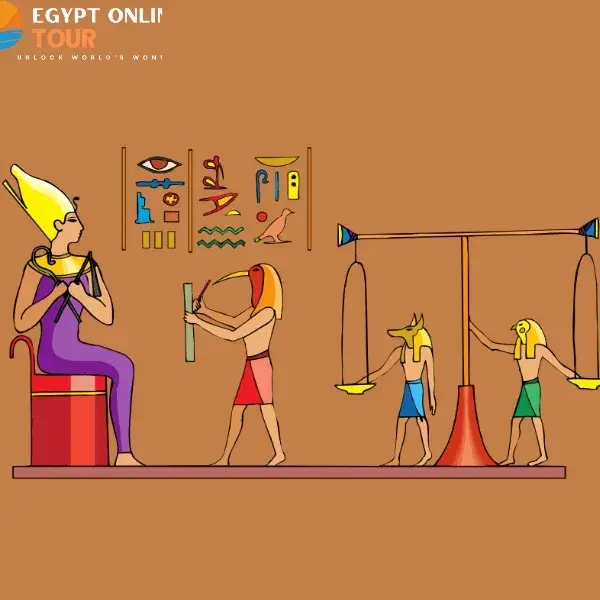
During the Old Kingdom (2686–2181 BC), the pharaoh was more than just a human ruler, he was considered the son of the god Ra himself and the representative of the gods on earth. Among the most important evidence of divine kingship are the inscriptions on the walls of temples and tombs. The inscriptions on the walls of temples and tombs often depicted the pharaoh in scenes with the gods, offering those offerings or receiving symbols of rule from them.
Evidence for The Pharaoh’s Role
For example, on the Pyramid of Unas in Saqqara, the inscriptions depict Unas ascending to heaven to become an eternal star alongside the gods. The meaning of these inscriptions is that the pharaoh did not rule by force of arms, but by the divine will of heaven. The pharaoh was considered the earthly incarnation of the god Horus and the direct son of Ra (the sun god), which granted him absolute religious and political legitimacy. Spells affirming his divine nature are inscribed on the Pyramid of Unas (Fifth Dynasty, 2375–2345 BC), such as:
- "Osiris, grant the pharaoh your authority to rule over the living and the dead" (inscription from the burial chamber).
- The title "Sa-Ra,": meaning "son of Ra," first appeared during the reign of Djedefre (son of Khufu), as a sign of his connection to the gods.
- Statues: such as the statue of Khafre with the falcon Horus behind his head (Egyptian Museum), symbolizing divine protection.
Economy: Control of Resources and Labor
The pharaoh owned all land and resources and regulated labor through a system of corvée (temporary forced labor).
- Construction Projects: The Pyramids of Giza were built by hired laborers (not slaves), as evidenced by the tombs of workers on the Giza Plateau, which contain inscriptions detailing the distribution of bread and beer as wages.
- Taxes: Collected in kind (grain, livestock) and stored in state warehouses, such as those discovered at Abusir.
Military Power: Border Protector
- Although the Old Kingdom was known for its relative peace, the pharaoh led military campaigns to protect the borders.
- Sinai Inscriptions: In Wadi el-Maghara, scenes depicting Sneferu (Fourth Dynasty) destroying Egypt's enemies and extracting copper are depicted.
- Nubian Campaigns: Records from the Temple of Wala at Elephantine show expeditions sent to bring back ivory and slaves.
Divine Kingship and Religious Power
The pharaoh was responsible for performing rituals to ensure the continuity of the universe according to Maat (cosmic justice).
- Heb-sed ritual: A ceremony to rejuvenate the pharaoh every 30 years, as depicted in the inscriptions of the Temple of Djers-djersru (the Step Pyramid of Djoser).
- Sun Temples: During the Fifth Dynasty, temples dedicated to Ra were built at Abusir, such as the Temple of Nyuserre, where the pharaoh offered sacrifices on behalf of the people.
- Coffin Texts: Later, the idea of religious mediation was inherited in texts such as:
- "The pharaoh is the one who opens the gates of heaven to the dead" (inscription from the tomb of Tiye at Saqqara).
- Since the pharaoh was the first priest of the gods, he was the only one who could "communicate directly with the gods."
His role in religion included:
- Leading major religious rituals in the temples.
- Overseeing the offering of sacrifices to ensure regular Nile flooding and good harvests.
- Ordering the construction of temples and pyramids as sacred sites that would ensure his immortality.
A real-life example:
- The Sun Temple of King Nyuserre at Abu Ghurab, built to worship the god Ra, served as a means of affirming the pharaoh's direct relationship with the sun.

Pharaoh’s Political Control Over Society
The pharaoh ruled through a complex bureaucracy, supported by provincial governors (nomarchs) and viziers, as follows:
- The Vizier: The most famous of whom was Imhotep (architect of Djoser's Pyramid), who combined religious and administrative positions.
- The Provincial Governors: Documents such as the Westcar Papyrus (Fifth Dynasty) mention the pharaoh's appointment of family members to provincial positions to ensure loyalty.
- Administrative Records: The Palermo Stone (Fifth Dynasty) records events such as livestock censuses and land distribution, as evidence of centralized control over resources.
The pharaoh was the head of state and administration, responsible for every aspect of the country:
- He appointed priests, governors, and judges.
- He directed the army and led wars.
- He distributed lands and supervised irrigation and agricultural projects.
- He had a vast bureaucratic network of scribes and officials called the "Central Administration."
All officials worked under the direct orders of the pharaoh.
In the tombs of high-ranking officials, such as the tomb of Mereruka in Saqqara, we see drawings illustrating the administration of taxes, agriculture, and industry under the supervision of officials bearing royal orders sealed with the pharaoh's seal.
The Pharaoh's Grand Projects - Symbols of Immortality and Control
The pharaoh didn't just rule... he built immortality for himself!
Like the Pyramid of Khufu, one of the wonders of the world, it was built under the direct orders of the pharaoh as a symbol of divine authority and eternal majesty.
Massive temples, such as the Temple of King Djoser, demonstrate careful planning and the political role he played in controlling society through sacred symbols.
Luxury Egypt Tours
In the Old Kingdom, the pharaoh was a cosmic axis that combined religious, political, and economic powers. Evidence such as the Pyramid Texts, statues, and meticulous administrative organization demonstrate how this system maintained Egypt's stability for over 400 years, before its authority disintegrated under the pressures of decentralization and environmental disasters.
Want to experience the majesty of the pharaoh? Come and see for yourself the places from which the kings of ancient Egypt ruled the world. With the Egypt Online Tour, we'll take you on a royal journey.
Book now your best Luxury Egypt Tours.
The Role of Priests and Scribes
Now we will discuss two pivotal figures in ancient Egyptian society, particularly during the Old Kingdom: the priests and the scribes, in a detailed, evidence-based manner.
The priests served as the pharaoh's arms in carrying out religious rituals, which were considered the foundation of cosmic stability according to the principle of "Maat." They were the guardians of religious and social order.
In ancient Egypt, the pharaoh was at the top, but behind him were those who maintained order and recorded every detail.
Temples as economic and religious centers: such as the Temple of Ptah in Memphis, which managed vast agricultural areas and distributed crops to the people. Inscriptions on its walls included texts such as:
- "The High Priest offers sacrifices to Ptah to bless the land of Egypt with fertility" (inscription from the reign of King Pepi I).
- Daily rituals included offering food and drink to the statues of the gods, as depicted in scenes in the solar pyramid temple of Nyuserre (Abu Sir), where priests are depicted carrying sacred vessels.
- Major celebrations, such as the Opet festival in Thebes, where the high priest carried the statue of the god Amun in procession to ensure the renewal of the pharaoh's divine legitimacy.
Priests and scribes
In this article, we will learn about their true role and why they were two essential pillars of a civilization that spanned thousands of years!
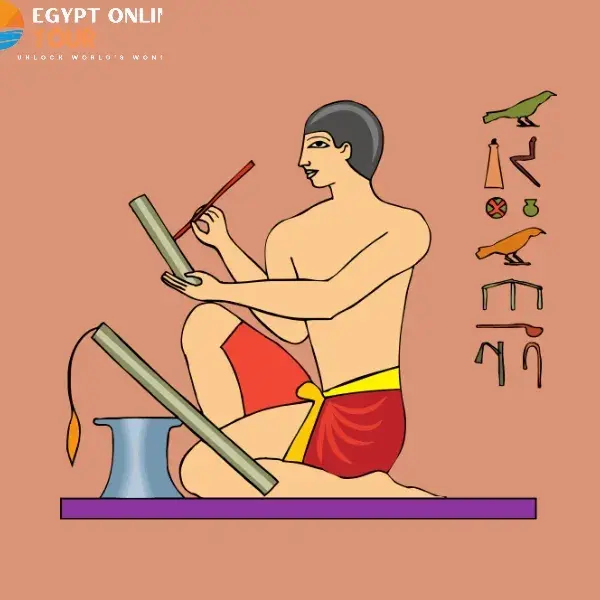
The importance of priests in maintaining order
Priests in ancient Egypt were not merely religious figures; they were responsible for maintaining the balance of the universe, or "maat"—the concept of truth, justice, and cosmic order. Their hierarchy was as follows:
- The High Priest (Hem-Netr): He was appointed directly by the pharaoh, as was the case with Ra and Wer (the priest of Ra during the reign of Khafre).
- Lower-ranking priests: such as the "reader priest" (Kheryheb), responsible for reciting religious texts, and the "purifying priest" (Wapu), responsible for purifying the temple.
The most famous evidence of this is, of course, the following:
- Priest tombs: such as the Kabir tomb at Saqqara (Fifth Dynasty), which contains inscriptions depicting ritual offerings, and the likeness of the tomb of Ptahhotep, demonstrating the extent of the community's respect for them and their high status.
- Temple papyri: such as the Abusir Papyrus, which records details of the daily distribution of offerings, and the inscriptions at Karnak Temple, which depict priests in ritual scenes presenting offerings to the god Amun.
Priest duties:
- Leading daily religious rituals to ensure the satisfaction of the gods.
- Offering offerings in temples.
- Determining festival days, floods, and agricultural seasons.
- Managing temples as large economic institutions that owned land and wealth.
Without them, it was believed the world would fall into chaos, as the gods would be upset and the balance would be disrupted.
Scribes as Record Keepers and Educated Elite
If the priests maintained spiritual balance, the scribes were the ones who preserved Egyptian memory and identity. Scribes were the educated class and held a very high position.
Scribes studied in temple schools, and education was difficult and exhausting. Furthermore, hieroglyphic writing was a specialized science, memorized only by scribes, which is why they were so important.
In addition, inscriptions on the tomb of the famous scribe "Ka Gemini" depict him sitting with writing tools: papyrus, an inkwell, and a brush—a symbol of pride and knowledge.
Scribes constituted the only class capable of reading and writing, making them essential to the administration of the state.
Their duties included:
- Recording taxes, crops, births, commercial transactions, and military records.
- Writing religious and funerary texts, such as the Pyramid Texts and the Book of the Dead.
- They worked as assistants to ministers and governors, and as teachers for the upper class. Here is the evidence for this:
- Tax collection: The Rhind Papyrus (1550 BC) shows precise tax calculations of agricultural land.
Documentation of royal projects: Scribes recorded details of pyramid construction in papyri such as the Merer Papyrus (reign of Khufu), which lists the names of workers and the amounts of food distributed to them.
- Judiciary: Scribes recorded legal contracts, such as a marriage contract from the reign of Pepi II preserved in the British Museum.
- Temple schools: Scribes learned hieroglyphics in schools such as those attached to the Temple of Ra in Heliopolis.
- Educational texts: Such as the Instructions of Khety (2000 BC), which instructed students such as, "Make writing your friend, for it is better than any other profession."
- Tools: They used papyrus quills (made from reeds) and wooden tablets coated with plaster for practice.

Archaeological Evidence
- Scribe Statues: Such as the statue of Kay (Egyptian Museum), depicted seated with a papyrus, a symbol of knowledge.
- Scribe Tombs: At Saqqara, such as the Tomb of Tiye, reliefs depict document-writing sessions and livestock counting.
The Integration of Priesthood and Writing in Maintaining Order
- Religious Documentation: Priests wrote funerary texts, such as the "Pyramid Texts" on the walls of the Pyramid of Wenas, which included spells to protect the pharaoh in the afterlife.
- Political Legitimacy: Scribes recorded the pharaoh's victories on temple walls, such as the Sneferu inscriptions in Sinai, which recount his military campaigns.
Priests and scribes were the backbone of the ancient Egyptian system:
Priests maintained cosmic balance through ritual, combining religious and economic authority.
Their Impact on the Survival of Civilization
Without priests and scribes, we would not know anything about Egyptian civilization.
Priests maintained the spiritual and social stability of the state.
Scribes transmitted history and immortalized the secrets we know today about ancient Egypt.
This confirms that this civilization wasn't built solely on the sword or the pyramid...
but on the pen, ritual, and reason.
Scribes ran the state rationally through meticulous documentation and preserved the civilization's legacy through writing.
Egypt Classic Tours
Evidence such as tax papyri, temple inscriptions, and statues of scribes demonstrates how these two classes contributed to the continuity of Egyptian civilization for more than 3,000 years.
Would you like to walk through a temple and smell the incense like an Egyptian priest? Would you like to hold ancient writing tools and imagine yourself as a pharaonic scribe recording state secrets?
It's all possible.
- With Egypt Online Tour, we organize private tours to visit:
- Major temples like Karnak and Abydos.
- Tombs of priests and scribes in Saqqara and Luxor.
- Educational workshops to experience hieroglyphic writing for yourself!
Book your Egypt Classic Tours with us and let history tell you its secrets... Don't just read about it, live it.
From the pharaoh to the peasant, learn about the social classes in ancient Egypt. In ancient Egypt, society was not equal, but there was a clear social hierarchy, with each class having a specific and respected role.
The Old Kingdom's class division reflected the philosophy of "maat" (balance), where each class complemented the others. The elite ruled by religion, craftsmen crafted symbols of immortality, and peasants nourished the nation, while slaves remained marginalized. Evidence from inscriptions and papyri shows that this system persisted due to the relative flexibility of social mobility (such as the rise of the scribes), but collapsed when the ruling class lost control of its resources.
Together, we will descend the ladder of Egyptian society from top to bottom, and learn about the functions of each class.
Social Classes in Ancient Egypt
The social structure during the Old Kingdom was strictly hierarchical:
- The pharaoh at the top, like a living god.
- Nobles and high officials.
- Priests and scribes.
- Craftsmen and skilled workers.
- Peasants.
- Slaves and servants.
Each class had specific functions, and the relationship between them was based on respect and complementarity, not conflict.
Main Class Differences:
Standard: | Nobles | Craftsmen | Peasants | Slaves |
Housing: | Mud brick palaces | small houses next to workshops | thatched and mud huts | simple barracks. |
Burials: | Decorated tombs at Saqqara | Simple mass graves. | Burials in sand pits | No known graves. |
Wages and salaries | land and gold | luxury goods (such as oils) | grains (wheat/barley) | no wages (basic maintenance) |
Rights | They participate in the judiciary | Primitive craft guilds | No political rights | Nonexistent |
Nobles and Officials: The Elite Class
The nobles and high officials were considered the executive arm of the pharaoh, enjoying economic and religious privileges. They were the "arms of the pharaoh," assisting him in ruling the country. Roles:
- Provincial governors (nomarchs): They oversaw the administration of regions such as Memphis and Thebes.
- Viziers: The most famous of them was Imhotep during the reign of Djoser, who combined engineering with priesthood.
- Provincial administrators (local governors or "merzins").
- Commanding armies.
- Supervising irrigation, construction, and agricultural projects.
Archaeological evidence:
- The tomb of Mereruka at Saqqara (Sixth Dynasty): It contains 32 rooms inscribed with scenes of land management and crop distribution.
- The Pyramid Texts: They mention titles such as "Governor of Upper Egypt" and "Chief of the Treasury," emphasizing the hierarchy of authority.
- The Westcar Papyrus (Fifth Dynasty): It recounts stories about the pharaoh's court and entourage.
- Huge tombs for these figures at Saqqara, Dahshur, and Giza are decorated with inscriptions of their owners with titles such as "Director of the Royal Grain" and "Overseer of the House of Gold."
Their status was very high, and they wore fine linen clothing, lived in palaces, and were buried in special tombs near the pyramids.
Artisans and Craftsmen: Middle-Level Workers
Artisans and skilled workers built glory with stone, chisel, and paint. Medium-skilled labor, artisans formed a middle class that managed the luxury industries needed for the royal court and temples.
Specialties:
- Sculptors, painters, masons, jewelers, and potters.
- Jewelry making, such as the golden necklace of Djoser discovered in his Step Pyramid.
- Sculpture: Statues such as those of Rahotep and Nofret (Egyptian Museum) show the precision of crafting eyes from quartz and crystal.
Evidence:
- Workers' tombs at Giza: depict inscriptions of craftsmen making funerary furniture.
- Ebers Papyrus (although later): details the making of gilded papyrus.
- A copper workshop at Tell el-Amarna: Metalworking tools dating back to the Old Kingdom have been discovered.
- Temple and tomb walls depict workers decorating walls or carving statues.
- Their tools, such as hammers and chisels, were found at construction sites.
They often lived in special villages, such as Deir el-Medina (although it dates back to the New Kingdom, it is an important example). They worked directly on the pharaoh's projects. Despite their middle-class status, their work immortalized their names.
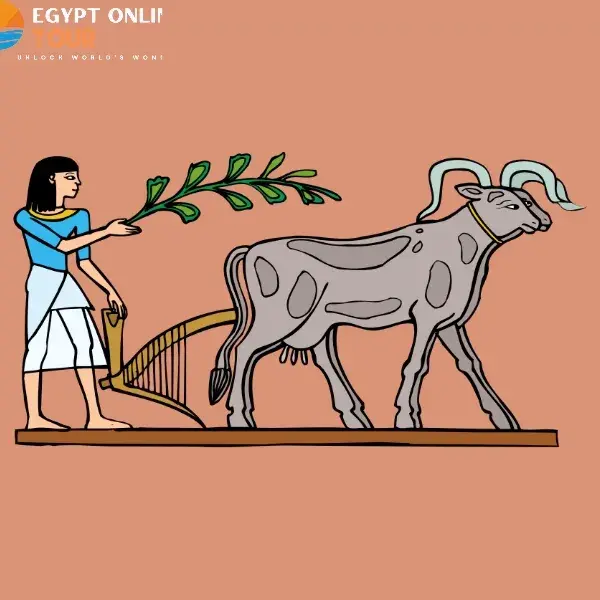
Peasants and Farmers: Backbone of the Economy
They were the backbone of the economy. Peasants in ancient Egypt cultivated the land and provided food for the entire community. They represented approximately 80% of the population and bore the brunt of providing food through seasonal agriculture dependent on the Nile flooding.
Roles:
- Agriculture: Plowing fields with wooden plows, harvesting wheat and barley, and growing crops such as wheat, barley, and flax.
- A portion of the harvest was given as a tax to the state or temples.
- Forced labor (corvée): Participating in construction projects such as the pyramids during flood seasons, and digging canals and regulating water after flooding.
Evidence:
- Reliefs in the tomb of Tiye at Saqqara: depict peasants planting and harvesting.
- The Rhind Papyrus: records the quantities of grain allocated as wages to workers.
- Agricultural tools in the tombs of Dahshur, such as stone axes and baskets.
- Scenes of peasants in the "Mererka Tomb" at Saqqara, plowing the land and gathering the crops.
- The "Texts of Judgment" papyrus demonstrates the importance of peasants in maintaining the stability of the country.
Despite their hard work, they were considered an essential part of "maat" – the cosmic order.
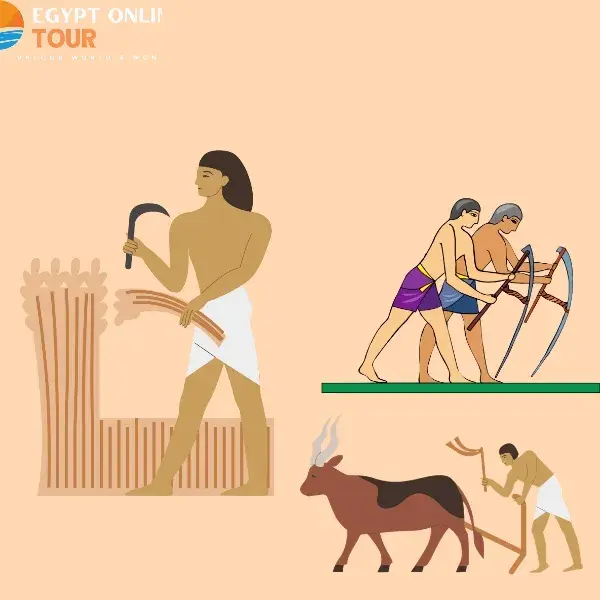
Slaves and servants were at the bottom of the social hierarchy, but they were clearly present, often serving in the homes of the wealthy and temples, the lower (relatively marginal) class. Slaves were not a large class in the Old Kingdom compared to later empires, and they were often prisoners of war.
Types:
- Some were prisoners of war.
- Others were Egyptians who lost their freedom due to debt.
- Servants in homes, laborers in fields, or in temples.
Roles:
- Domestic service: in the palaces of the nobility.
- Working in mines, such as the turquoise mines in Sinai.
Evidence:
- Reliefs from the Valley Temple of Khafre: depict Asian captives being presented as gifts to the pharaoh.
- Tombs of Beni Hassan (12th Dynasty): depict servants from Nubia and Libya, but reflect a continuation of the pattern of enslavement from earlier eras.
- Reliefs in some tombs of the nobility depict servants serving food or cleaning houses.
- Cursed texts from the reign of Pepi I: list the names of Egypt's enemies who were turned into slaves.
They weren't always treated harshly; some lived in relative stability, sometimes even being buried next to their masters. Slaves were an integral part of the system, but without clear rights.

The best Egypt tour packages
Would you like to see the tombs of scribes? Walk through the palaces of the nobles? Or see the tools of craftsmen?
With Egypt Online Tour, we take you on a journey through ancient Egyptian society. Visit with us:
- The Tombs of the Nobles in Saqqara.
- The Craftsmen's Workshops in Luxor.
- The Museum of Egyptian Civilization to see the daily tools of each class.
- Interactive experiences of hieroglyphic writing and pharaonic agriculture.
Book your best Egypt tour packages today and experience the layers of pharaonic society from top to bottom. With us, every step is a journey through history.
Let our local travel experts help you design the perfect itinerary. Whether you're seeking adventure, culture, or relaxation, we've got you covered!
Have you ever asked yourself, how do we know who was rich and who was poor in ancient Egypt? The answer was simply... "Art and tombs. Together we will learn how tombs, decorations, and even pyramids reflected social status.
In ancient Egypt, the tomb was not just a burial place; it was the "house of eternity," and every detail within it reflected its owner's status in society. Tombs were like a "stone biography" that reflected an individual's status in society through their size, design, and inscriptions.
The basic differences between the classes:
Tombs of the Pharaohs: Pyramids as a symbol of divine immortality
- The Pyramid of Khufu (Giza): Its original height was 146 meters, built with 2.3 million stone blocks, with passageways that mimicked the path of the stars to ensure the ascension of the pharaoh's soul.
- The Pyramid Texts: Inscribed inside the Pyramid of Unas (Fifth Dynasty) were spells such as: "May the pharaoh open the gates of heaven and ascend like a falcon to the throne of Ra."
- Funeral temples: Such as the Valley Temple To Khafre, who was used to commemorate the Ka (spirit) rituals through daily offerings.
Tombs of the Nobles: Mastabas as a Mark of the Elite
- Mereruka Tomb (Saqqara): Includes 32 chambers carved with hunting and agricultural scenes, demonstrating the owner's authority as vizier of the local administration.
- Offering reliefs: Depicting the royal family making offerings to a nobleman, such as the relief in Tiye's tomb showing the king granting him the right to manage the lands.
- Smaller in size.
Fewer decorations, but they illustrate the nature of their work (writing, carving, agriculture, etc.).
At Deir el-Medina, workers' scribes built elegant tombs, but simpler than those of the nobles.
Poor Tombs:
- Mass graves at Giza: Pyramid workers were buried in simple pits with their work tools, such as the wooden chisel discovered in a worker's tomb.
- Peasant reliefs: In Beni Hassan tombs, harvest scenes are depicted without any reference to land ownership.
- Sometimes undecorated.
- Simple pits in the ground or mud chambers.
- Lack of detail. Simply ensuring a "safe passage to the afterlife."
The more elaborate the sculpture and calligraphy, the greater the person's importance.
Statues: Size and Materials
- Statue of Khafre with Horus (Egyptian Museum): 1.68 meters tall, made of black diorite, symbolizing divine power.
- Statue of the Seated Scribe: Made of colored limestone, smaller (53 cm), reflects the middle-class status of the scribe.
Wall Inscriptions: Visual Hierarchy
- Lion hunting scene in Tiye's tomb: Tiye appears larger than the servants, while the lions are miniature to emphasize his dominance.
- Costume Colors: Nobles wear white robes (symbolizing purity), while workers wear dark skin.
Even the arrangement of people in murals (the most important person in the foreground, the servants behind him) reflected their social hierarchy.
Building the pyramids was not just an architectural marvel… It was a massive state project that reflected precise social organization.
How do the pyramids illustrate social hierarchy and hierarchy in detail, as artworks reflected individual status through symbols, sizes, and colors?
The implementation of massive projects revealed a complex social structure based on specialization and a hierarchy of leadership.
The Pharaoh at the Top:
- He is the owner of the pyramid, and the state marshals all its resources to build it.
- Such as the Pyramid of Khufu in Giza—the largest stone building in history.
Engineers and Nobles:
- Responsible for design, planning, and supervision.
- Their names and inscriptions have been found in internal rooms and organizational corners.
Skilled Workers and Craftsmen:
- Worked in carving, transporting, and stonemasonry.
- They lived in workers' towns such as the "Workers' Village" next to the Pyramid of Khufu.
- Remains of their dwellings, tools, and even their bones have been discovered, indicating good nutrition and medical care.
Common workers and peasants:
- Participated in the work during the flood season (when the land was not cultivated).
- They received food and housing in exchange for their work.
- The workers' stone inscriptions, such as "Friends of Khufu" and "Drunkards from the South," indicate teams and organization.
Archaeological discoveries confirm that pyramid construction was a collective, organized endeavor under a central authority.
Art, tombs, and pyramids are not just stone remnants...
These are messages from the past, telling us who was where on the social ladder!
Every detail, from a writing tablet to an architectural structure, bears witness to a precise, meticulously controlled social order.
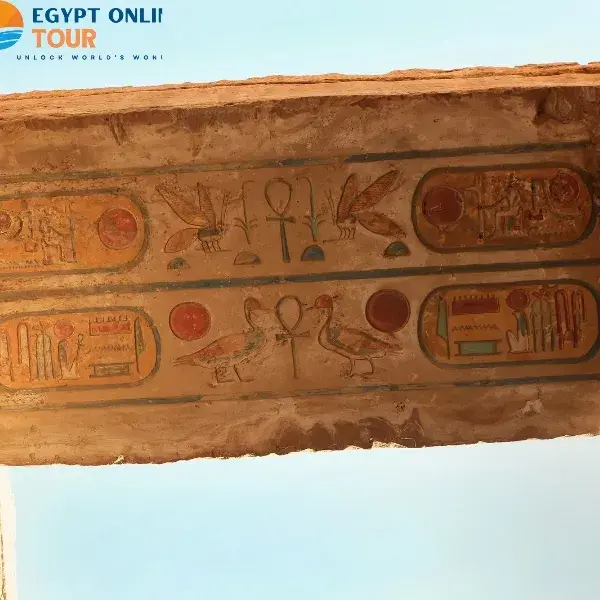
Table summarizing the relationship between class and architecture
Class | Tomb Type | Materials Used | Reliefs | |
Pharaoh | Pyramid + Funerary Temple | Granite, Diorite | Pyramid Texts, Sacrificial Scenes | |
Nobles | Decorated Mastaba | Painted Limestone | Administrative Scenes, Lion Hunting | |
Craftsmen | Small Mass Tomb | Mud Brick | Working Tools (Chisel, Hammer) | |
Peasants | Sand Pit | No Distinctive Materials | No Inscriptions |
Archaeological Evidence of Hierarchy
The most convincing evidence of them is the Merer Papyrus (Khufu's reign), which records the names of workers such as the "Great Company" and the "Corps of Heroes," specifying their rations of bread and beer. Also found in the tombs of supervisors on the Giza Plateau are the supervisors buried in small mastabas bearing titles such as "Chief of Transport Workers."
Workers' Villages (such as Heliopolis):
- Skilled workers' houses: built of mud brick with multiple rooms.
- Common workers' barracks: windowless communal rooms.
- Building Tools: Hundreds of copper chisels have been discovered in the Tura quarries, bearing royal insignia indicating their distribution by rank.
The Role of Scribes in an Organization
Limestone Records: At Dahshur, tablets were found listing the names of workers and their workdays, such as:
- "The worker Sneferu, worked 10 days transporting stones."
- Illustrations: In the tomb of Rekhmire (Thebes), depicting the temple construction process with details of the division of labor.
A Unique Archaeological Evidence
- The Abusir Papyrus (Fifth Dynasty): Records the distribution of meat to priests and workers according to their ranks.
- The tomb of Ptah-Shepses (Saqqara): Shows a nobleman inspecting the sculpture workshops, with scribes recording the details.
- An inscription in Wadi Hammamat: Describes a basalt quarrying campaign under the supervision of the "Prince of Upper Egypt."
Funeral art and architecture in the Old Kingdom embodied a social philosophy based on:
- Strict hierarchy: through the size of the tomb and the detail of the inscriptions.
- Job specialization: as shown by the roles of workers in construction records.
- Religious legitimacy: through the connection of the pharaoh to the gods in texts and inscriptions.
This evidence not only demonstrates the ancient Egyptians' artistic excellence, but also reveals a cleverly organized society that was able to unite the efforts of thousands of individuals in the service of a single universal vision.
Egypt Vacation Packages
What are you waiting for? Come and see for yourself the tombs of the nobles at Saqqara, the decorations of the scribes at Deir el-Medina, and stand at the foot of the Great Pyramid!
Our tours will let you touch history with your own hands. Visit the workshops of ancient artists and enter tombs decorated by the hand of an Egyptian craftsman thousands of years ago.
Book your Egypt Solar Eclipse now with Egypt Online Tour, and let history tell you about society like never before.
Conclusion
The article provides a comprehensive overview of the social structure in Egypt during the Old Kingdom, one of the most prosperous periods in ancient Egyptian history. It highlights the importance of the pharaoh as a source of religious and political authority and his role in consolidating the social order. It also reviews the sequence of social classes, starting with the pharaoh, then the nobles, scribes, and priests, passing through craftsmen and peasants, and finally slaves and servants, explaining how each contributed to shaping the fabric of Egyptian society. The article also addresses the role of art and funerary architecture, such as the pyramids and inscriptions, in expressing this class hierarchy, along with the role of education, which was limited to the scribes and elite, and the influence of religion in consolidating power.
Frequently Asked Questions
1 Was everyone educated in the Old Kingdom? ▶
2 What was the structure of ancient Egyptian education? ▶
3 What organ is left in mummies? ▶
Popular Categories
Related properties
Cairo, Aswan, and Luxor
-
Precio
$ 2,850
-
Tipo
Package
Cairo, Aswan, and Luxor
-
Precio
$ 1,850
-
Tipo
Package

